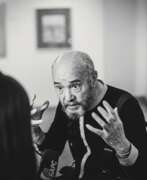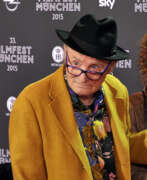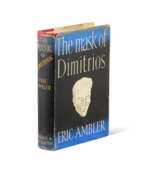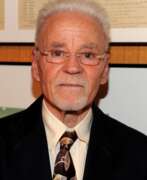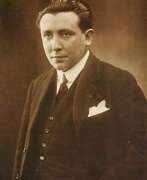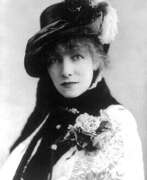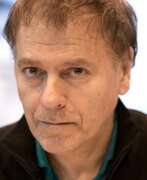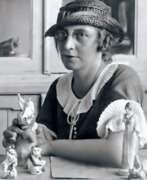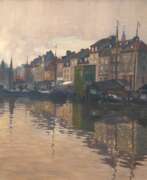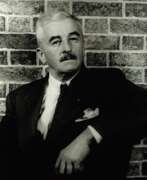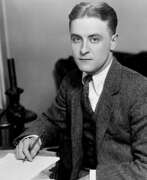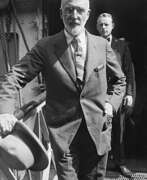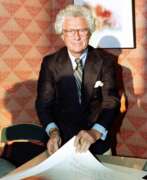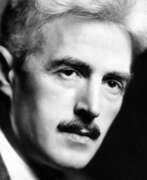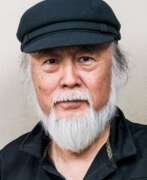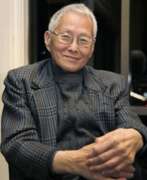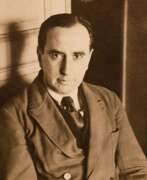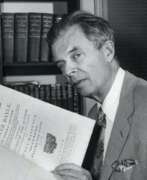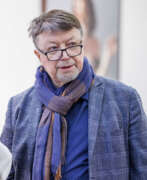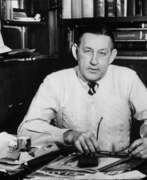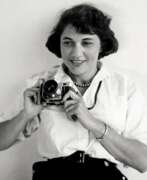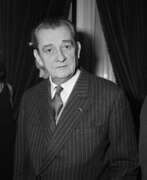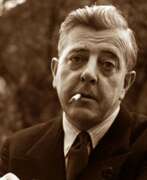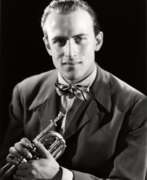Screenwriters
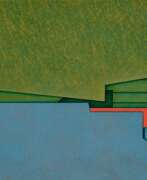

Gunther Gerzso was a Mexican painter, designer and director and screenwriter for film and theatre.
Gunther Gerzso was awarded the Guggenheim Fellowship in 1973 and later in 1978 he was the recipient of the Premio Nacional de Bellas Artes.
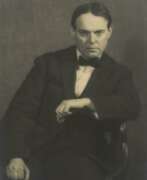

Pierre Mac Orlan, real name Pierre Dumarchey, is a French writer, poet, screenwriter, playwright, artist and journalist.
Pierre Dumarchey spent his youth leading a bohemian lifestyle, but by the age of 20 he had already published several collections of short stories with his own illustrations. He socialized with many contemporary writers and artists, played the accordion, and many of his songs were quite popular in cabarets. In World War
I in 1916, Pierre Dumarchey was wounded, after which he worked as a war correspondent. In the late 1920s, he became an influential critic of film and photography. And later became a famous writer under the pseudonym Pierre Mac-Orlan. Based on his most famous novel Quai des Brumes ("Port of Shadows"), French director Marcel Carné made a movie of the same name in 1938.
In addition to his numerous novels, Mac-Orlan published under various pseudonyms in erotic magazines. Pierre Mac-Orlan was a very prolific writer: in 1969-1971, a collection of his works in 24 volumes was published, which, however, did not include his many erotic works.
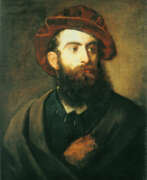

Hans Makart was an Austrian painter of the second half of the 19th century. He became famous as a master of historical painting, still life, allegory, landscape, and portrait. Most of his paintings were painted in the academic style. Makart was also a sought-after stage decorator, costume designer, furniture and interior designer.
Hans Makart was very popular in Vienna, and his studio was a place of attraction for the cream of Vienna's society. After the artist was even named a separate style of art with its characteristic flowing forms and bright colors - "Makartstil". Makart constantly organized grand festivals in his studio, which were willingly attended by members of the imperial family. He made it ultra fashionable to have a new style of interior and soon most of the apartments of wealthy citizens of Vienna were furnished on the model of his salon.
Makart was a professor of historical painting at the Vienna Academy of Fine Arts and head of the Künstlerhaus, the largest exhibition complex in the Austrian capital. In 1879, on the occasion of the silver wedding of the imperial couple, Makart organized a grandiose theatrical performance, the sketches for which have survived to this day.
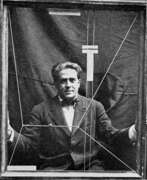

Francis Picabia, born Francis-Marie Martinez de Picabia, was a French avant-garde painter, poet, and typographist, whose work is celebrated for its diversity and innovation. His journey through various art movements, including Impressionism, Cubism, Dadaism, and Surrealism, showcases his refusal to be confined by any one style. Picabia's art is known for its eclectic nature, often blending mechanical elements with organic forms, thereby challenging traditional perceptions of art and beauty.
Picabia's significant contribution to the art world lies not just in his varied artistic output but also in his philosophical approach to creation. He believed in the freedom of expression, often using his art to critique societal norms and the art establishment itself. This rebellious spirit made him a pivotal figure in the Dada movement, where his works were celebrated for their irony and disdain for conventional art values.
Among his notable works, "Amorous Parade" and "I See Again in Memory My Dear Udnie" stand out, housed in prestigious institutions like the Museum of Modern Art in New York. These pieces exemplify Picabia's mastery over blending different elements of art movements, creating works that remain influential to this day. His legacy is not just in the pieces he created but also in his attitude towards art, encouraging future generations to challenge and redefine the boundaries of creativity.
For collectors and experts in art and antiques, Picabia's works represent not only significant artistic achievements but also valuable insights into the evolution of modern art. To stay informed about new product sales and auction events related to Francis Picabia, sign up for updates. This subscription is an essential resource for enthusiasts looking to enrich their collections with pieces from one of the most innovative artists of the 20th century.
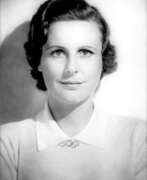

Helene Bertha Amalie "Leni" Riefenstahl was a German film director, photographer and actress known for her role in producing Nazi propaganda.
A talented swimmer and an artist, Riefenstahl also became interested in dancing during her childhood, taking lessons and performing across Europe. After seeing a promotional poster for the 1924 film Mountain of Destiny, she was inspired to move into acting and between 1925 and 1929 starred in five successful motion pictures. Riefenstahl became one of the few women in Germany to direct a film during the Weimar Period when, in 1932, she decided to try directing with her own film, Das Blaue Licht ("The Blue Light").


Otto Gerhard Waalkes is a German comedian, cartoonist, actor (including voice actor), musician, director and screenwriter. He has won many prizes and awards, among them the Order of Merit of the Federal Republic of Germany.
The little elephant Ottifant, which he invented, became the symbol of Otto Walkes' art and also the character for a series of comics and cartoons.
In the late 1970s and early 1980s Valckes turned his attention to comedy, appearing on stage and on television. He became known for his wry humour and his ability to create humorous characters and voices. His performances often include a mixture of stand-up comedy, skits and musical numbers.
Wallkes has also had a successful career in film and television. He has appeared in numerous German films. He also provided the voice for several animated films.
Otto Gerhard Wallkes is a well-known philanthropist, supporting various charities in Germany and around the world.
